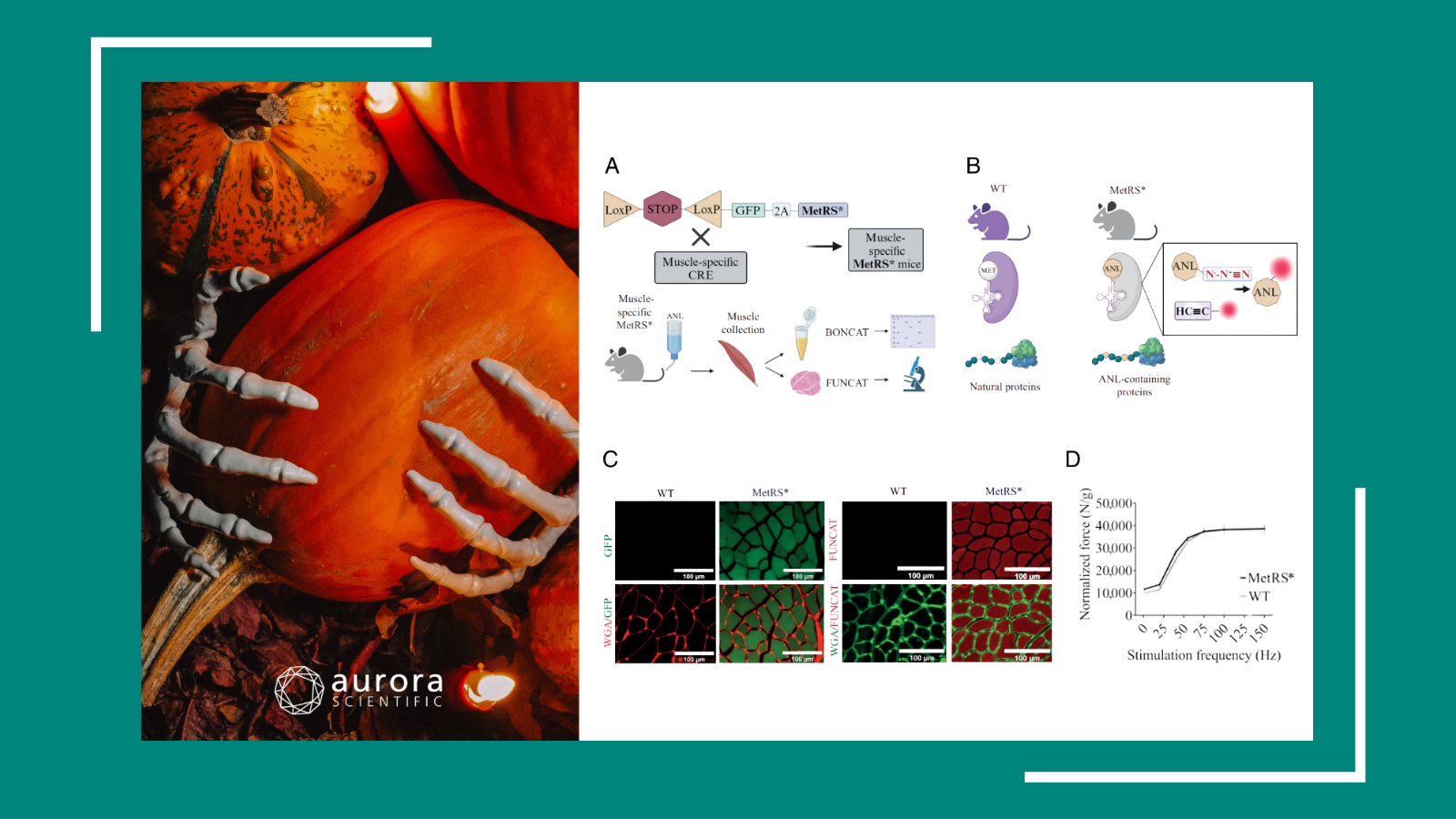Sensing and responding to mechanical force are integral parts of daily life. Cutaneous low-threshold mechanoreceptors (LTMRs) mediate the light touch of glabrous skin and can be classified as rapidly adapting (RA) or slowly adapting (SA) based on if they spike repetitively during sustained tactile stimulation. SA-LTMRs can further be classified based on spike regularity, with SA2 neurons spiking more frequently than SA1 neurons. At Aurora Scientific, we offer instruments that facilitate the study of these primary sensory neurons, which we have highlighted below in this publication review.
Featured image (© 2019, Al-Basha and Prescott, licensed under CC BY 4.0) demonstrates the methodology used to ensure that skipped spikes are not an artifact.
Intermittent Failure of Spike Propagation in Primary Afferent Neurons during Tactile Stimulation
Primary afferent spikes originate in axon terminals that innervate peripheral tissue, unlike central neurons, whose spikes originate in the axon initial segment. On their way to the central nervous system, spikes cross a T-junction in the dorsal root ganglion (DRG); propagation may fail at this site and can affect somatosensation. Al-Basha and Prescott studied LTMR coding properties by applying sustained tactile stimuli to the glabrous skin of mouse hindpaws and observed “semiregular” units that did not fit into the existing SA1 or SA2 classification scheme, and sought to further investigate the underlying mechanism. Prior to this study, research into propagation reliability relied almost entirely on computer simulations and in vitro experiments. Through in vivo experiments that employed our 300C-I Dual-Mode Indenter for mechanostimulation in addition to computer simulations, the authors determined that integer-multiple-patterned spiking results from the intermittent failure of spikes to propagate through the T-junction in the DRG rather than the intermittent failure of spike initiation. However, these failures were found to be rare. Half of all SA2 units exhibited some missing spikes at a low rate, suggesting that axons efficiently use the lowest safety factor to produce near-perfect propagation reliability.
Cortical Responses to Touch Reflect Subcortical Integration of LTMR Signals
Current models that explain how signals from cutaneous mechanoreceptors generate representations of touch are based on comparisons of the tactile responses of these subtypes and neurons in the somatosensory cortex, but functional perturbation experiments have not been performed to date. Therefore, Emanuel et al. used mouse genetic manipulations to determine the contributions of peripheral mechanoreceptor subtypes to cortical responses to touch, and also employed our 300C-I Dual-Mode Indenter to stimulate mouse paws and deliver force-controlled indentations. Data from this study indicate that both subtypes contribute to normal cortical responses, and that most mechanically sensitive cortical and somatosensory thalamic neurons are driven by the activation of Aβ RA-LTMRs or Aβ SA-LTMRs. The authors propose that the subcortical convergence of signals from peripheral mechanoreceptors provides elements that are necessary for the central encoding of complex features of the physical world.




